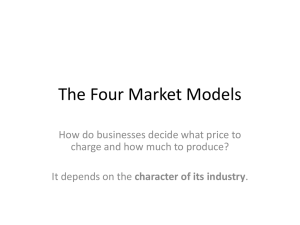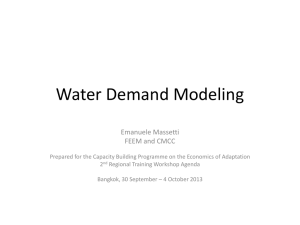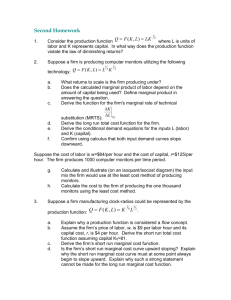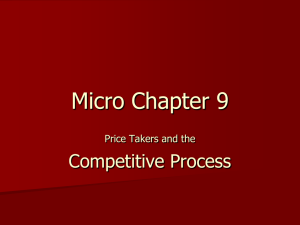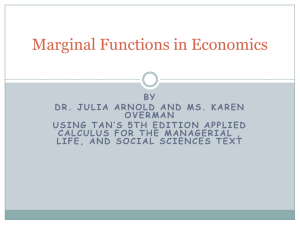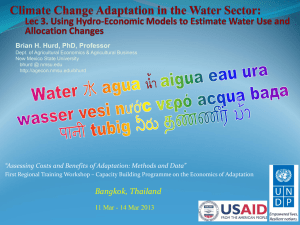投影片 1
advertisement
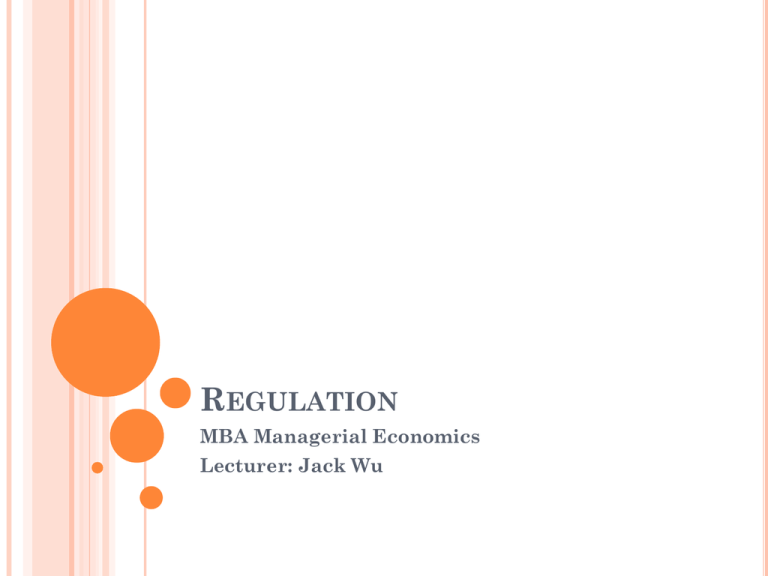
REGULATION MBA Managerial Economics Lecturer: Jack Wu REGULATION natural monopoly potentially competitive market asymmetric information externalities public goods NATURAL MONOPOLY Average cost minimized with single supplier large scale/scope economies relative to market demand MARGINAL COST PRICING Require provider set price equal to marginal cost supply quantity demanded demand marginal cost AVERAGE COST PRICING Require provider set price equal to average cost supply quantity demanded demand average cost marginal cost RATE OF RETURN REGULATION maximum rate of return on rate base disallowed profit returned to users POTENTIALLY COMPETITIVE MARKET Economies of scale/scope are small relative to market demand technology market demand MATH EXAMPLE Suppose that the demand for electric power is P=10-q. P represents price in thousand dollars and q represents quantity in megawatt-hours. All generating plants have a capacity of 10 megawatt-hours. Generation involves a fixed cost of $50,000 and a constant marginal cost of $1000 per megawatthour. Now, suppose that the demand grows to P=100.05q. How many plants would be needed to meet the quantity demanded? STRUCTURAL REGULATION Bar franchise holder from vertically related markets prevent monopoly from extending market power MORAL HAZARD IN MEDICINE price ($/hour) supply a b inflated demand true demand quantity (million hours a mth) RESOLVING INFORMATION ASYMMETRY mandatory disclosure regulation of conduct structural regulation marg. cost/benefit ($/ton) EMISSIONS marginal cost to society 35 marginal benefit to society 8000 quantity (tons/year) marg. cost/benefit ($/ton) EMISSIONS FEE user fee 35 marginal benefit to society 8000 quantity (tons/year) ACCIDENTS marg. cost/benefit marginal cost to driver s marginal benefit to society quantity (units of care) PUBLIC GOODS legal framework enables excludability copyright patent trade-off incentive for knowledge creation economically efficient usage of information PUBLIC PROVISION For some public goods, practically difficult to enforce exclusion national defense clean air fireworks CONGESTIBLE FACILITIES social marginal cost varies with usage resolve through user fee = social marginal cost time usage DISCUSSION QUESTION The demand for electric power in Sol Province is p = 20 - 20q, where p and q represent the price in thousands of dollars and quantity in Megawatt hours, respectively. Suppose that an electricity plant generates power at a constant marginal cost of $1000 per megawatt hour up to a capacity of 10 megawatt hours. Sol Province requires the plant to implement marginal-cost pricing. DISCUSSION QUESTION Illustrate the price and quantity with marginal cost pricing. Suppose that demand grows to P=20-0.1q. At a price of $1000 per megawatt hour, what is the minimum number of plants needed to produce the quantity demanded?


